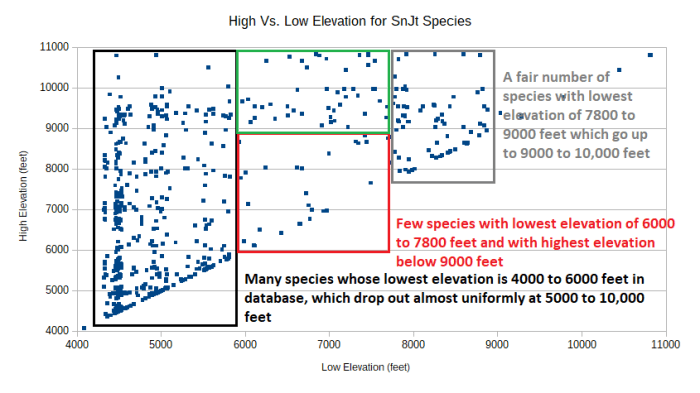Richer or leaner at higher elevation? This question delves into the intriguing realm of human physiology and adaptation, as we explore the profound effects of altitude on our bodies and minds. As we ascend to higher altitudes, the air becomes thinner, presenting unique challenges and opportunities for our physiological systems.
At high altitudes, the reduced oxygen levels trigger a cascade of metabolic adaptations, including increased red blood cell production and enhanced nutrient absorption. These adaptations enable our bodies to function effectively in oxygen-deprived environments. However, prolonged exposure to high altitudes can also pose health risks, such as altitude sickness and other complications.
Altitude and Oxygen Levels: Richer Or Leaner At Higher Elevation
The atmosphere is composed of a mixture of gases, including nitrogen, oxygen, and other trace gases. Oxygen is essential for human life, and its concentration in the atmosphere decreases with increasing altitude.
At sea level, the oxygen concentration is approximately 21%. However, as altitude increases, the air becomes thinner and the oxygen concentration decreases. This is because the weight of the air above exerts pressure on the air below, causing it to compress.
As a result, the air at higher altitudes is less dense and contains less oxygen.
Physiological Effects of Reduced Oxygen Levels
- Hypoxia: Reduced oxygen levels can lead to hypoxia, a condition in which the body’s tissues do not receive enough oxygen. Hypoxia can cause a variety of symptoms, including shortness of breath, fatigue, confusion, and impaired coordination.
- Altitude sickness: Altitude sickness is a common condition that occurs when people travel to high altitudes too quickly. Symptoms of altitude sickness include headache, nausea, vomiting, and fatigue.
- High-altitude pulmonary edema (HAPE): HAPE is a serious condition that can occur at high altitudes. HAPE is characterized by fluid buildup in the lungs, which can lead to shortness of breath, coughing, and chest pain.
- High-altitude cerebral edema (HACE): HACE is a serious condition that can occur at high altitudes. HACE is characterized by fluid buildup in the brain, which can lead to headache, confusion, and loss of consciousness.
Metabolic Adaptations to High Altitude
The human body has a number of mechanisms to adapt to reduced oxygen levels at high altitude. These adaptations include:
Erythropoietin
Erythropoietin is a hormone that stimulates the production of red blood cells. Red blood cells carry oxygen from the lungs to the tissues. At high altitudes, the body produces more erythropoietin, which leads to an increase in red blood cell production.
This increase in red blood cells helps to improve oxygen delivery to the tissues.
Mitochondrial adaptations
Mitochondria are the energy-producing organelles in cells. At high altitudes, mitochondria undergo a number of adaptations that help to improve oxygen utilization. These adaptations include an increase in the number of mitochondria, an increase in the size of mitochondria, and an increase in the activity of mitochondrial enzymes.
Altitude training
Altitude training is a type of training that is performed at high altitudes. Altitude training can help to improve the body’s ability to adapt to reduced oxygen levels. This is because altitude training stimulates the production of erythropoietin and mitochondrial adaptations.
Nutrient Absorption and Utilization
High altitude can have a number of effects on nutrient absorption and utilization. These effects include:
Reduced appetite
At high altitudes, many people experience a loss of appetite. This is due to a number of factors, including the effects of hypoxia on the digestive system.
Impaired nutrient absorption
Reduced oxygen levels can also impair nutrient absorption. This is because the digestive system requires oxygen to function properly. When oxygen levels are low, the digestive system may not be able to absorb nutrients as efficiently.
Increased nutrient requirements
At high altitudes, the body requires more nutrients to meet the increased demands of altitude exposure. This is because the body needs more energy to produce heat and to maintain body temperature.
Physical Performance at High Altitude

High altitude can have a significant impact on physical performance. This is due to the reduced oxygen levels at high altitudes, which can lead to hypoxia and impaired muscle function.
Endurance performance
Endurance performance is particularly affected by high altitude. This is because endurance activities require a lot of oxygen. At high altitudes, the body is not able to deliver as much oxygen to the muscles, which can lead to fatigue and impaired performance.
Strength performance
Strength performance is also affected by high altitude, but to a lesser extent than endurance performance. This is because strength activities do not require as much oxygen as endurance activities.
Strategies for mitigating the effects of altitude on performance
There are a number of strategies that athletes can use to mitigate the effects of altitude on performance. These strategies include:
- Acclimatization: Acclimatization is the process of gradually exposing the body to high altitude over a period of time. This allows the body to adapt to the reduced oxygen levels and to improve its performance.
- Altitude training: Altitude training is a type of training that is performed at high altitudes. Altitude training can help to improve the body’s ability to adapt to reduced oxygen levels and to improve performance.
- Supplements: There are a number of supplements that can help to improve performance at high altitude. These supplements include iron, erythropoietin, and creatine.
Health Considerations at High Altitude

There are a number of health considerations that people should be aware of when traveling to high altitude. These considerations include:
Altitude sickness
Altitude sickness is a common condition that occurs when people travel to high altitudes too quickly. Symptoms of altitude sickness include headache, nausea, vomiting, and fatigue.
High-altitude pulmonary edema (HAPE)
HAPE is a serious condition that can occur at high altitudes. HAPE is characterized by fluid buildup in the lungs, which can lead to shortness of breath, coughing, and chest pain.
High-altitude cerebral edema (HACE)
HACE is a serious condition that can occur at high altitudes. HACE is characterized by fluid buildup in the brain, which can lead to headache, confusion, and loss of consciousness.
Importance of acclimatization and gradual ascent
It is important to acclimatize to high altitude gradually to reduce the risk of altitude sickness and other health problems. Acclimatization can be achieved by spending several days at a lower altitude before ascending to a higher altitude. It is also important to ascend gradually, allowing the body to adapt to the reduced oxygen levels.
Socioeconomic Impacts of High Altitude Living

High altitude living can have a number of socioeconomic impacts on communities. These impacts include:
Access to healthcare
Access to healthcare can be limited in high altitude communities. This is due to a number of factors, including the remoteness of these communities and the lack of infrastructure.
Education, Richer or leaner at higher elevation
Education can also be limited in high altitude communities. This is due to a number of factors, including the lack of schools and the high cost of education.
Economic opportunities
Economic opportunities can also be limited in high altitude communities. This is due to a number of factors, including the lack of infrastructure and the limited availability of jobs.
Role of government and non-profit organizations
Government and non-profit organizations can play an important role in addressing the socioeconomic challenges faced by high altitude communities. These organizations can provide funding for healthcare, education, and economic development.
FAQ Resource
How does altitude affect oxygen levels?
As altitude increases, the air becomes thinner, resulting in a decrease in oxygen concentration.
What are the physiological effects of reduced oxygen levels?
Reduced oxygen levels can lead to increased heart rate, shortness of breath, and decreased physical performance.
How does the body adapt to high altitude?
The body responds to high altitude by increasing red blood cell production, enhancing nutrient absorption, and making other metabolic adjustments.
What are the potential health risks of high altitude exposure?
Prolonged exposure to high altitude can increase the risk of altitude sickness, which can cause headaches, nausea, and vomiting.